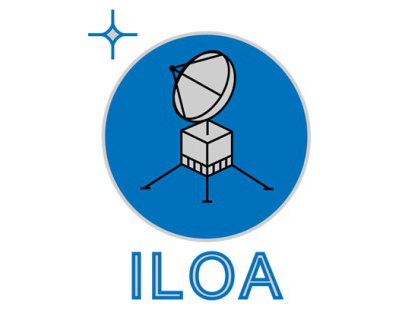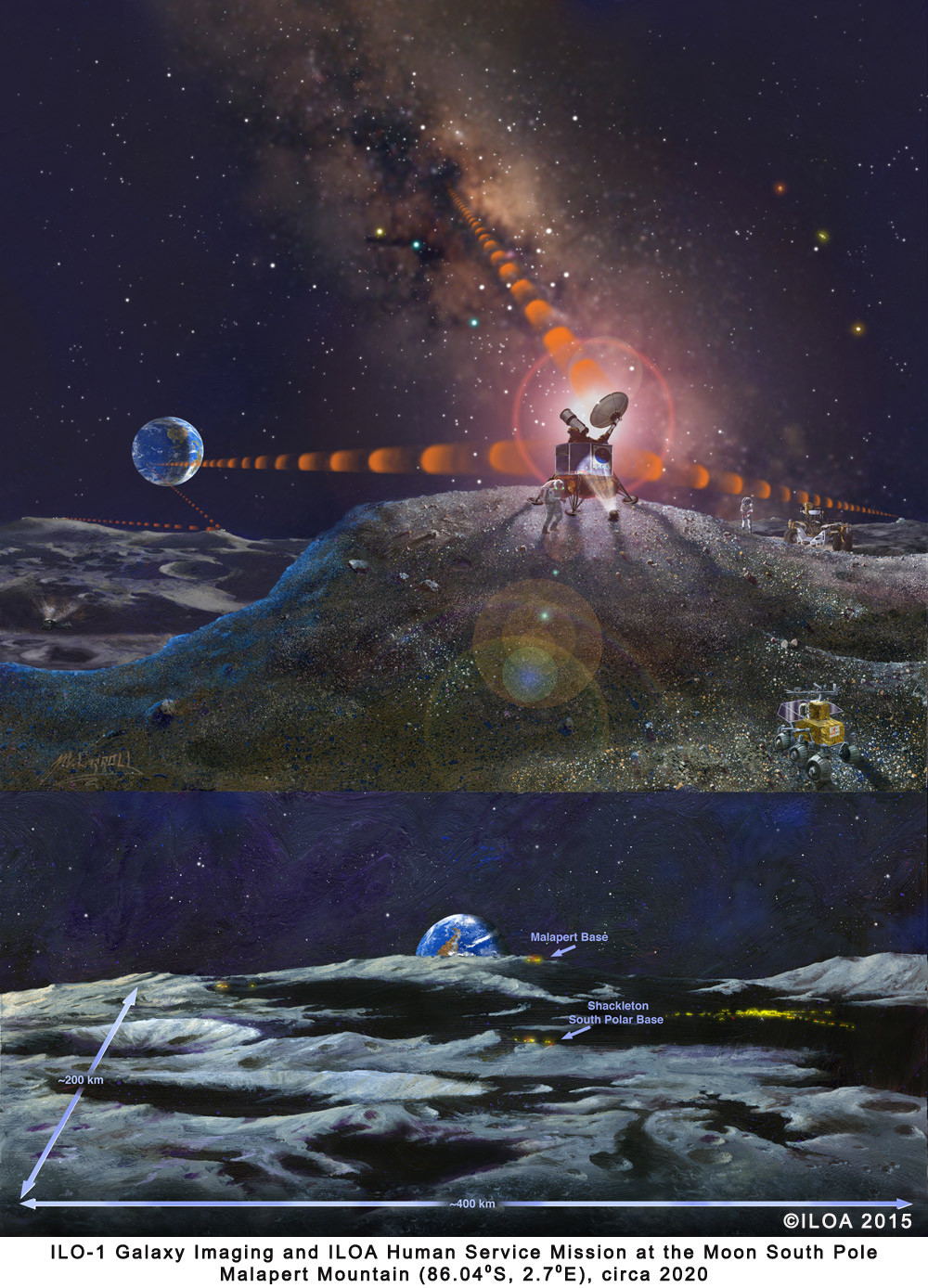Video by Dave Corrigan, filmed on November 12, 2015 in Waimea.
WAIMEA, Hawaii – The idea that the moon could serve as a viable location to site and operate an observatory was discussed at the Galaxy Forum Hawaii 2015 in Waimea.
The event was organized by the International Lunar Observatory Association, a Hawaii-based non-profit looking to “expand human knowledge of the Cosmos through observation from our Moon and to participate in internationally cooperative lunar base build-out, with Aloha – the spirit of Hawaii.”
Following individual presentations, a question and answer forum was held. Participants included Hawaiian cultural practitioner and kumu Pua Case, Hawaii kupuna and cultural practitioner Kimo Keli’i Ka’aha’aina Pihana, astronomers Doug Simons with the Canada France Hawaii Telescope and R. Pierre Martin, Director of the UH Hilo Hoku Ke’a Observatory and part of the ILOA Hawaii Lunar Astronomy Team. They were joined by Steve Durst, the founding director of the ILOA and editor / publisher of Space Age Publishing Co. The forum was moderated by Sherry Bracken, LAVA 105.3 fm and KKOA 107.7 fm (and voice of Big Island Video News)
One of the questions asked during the forum: Could observatories on the moon “be a longer-term goal that would allow – perhaps – less of an impact or footprint on the mountain here?” The question prompted a diverse response from the panelists.
MORE: LUNAR OBSERVATORY
Video by Dave Corrigan, featuring the presentation on astronomy from the moon by Pierre Martin, filmed on November 12, 2015 in Waimea.
‘Astronomy From The Moon’ Proposed to Governor Ige for 21st Century Science, Education, and Social Harmony
– Hawai`i may best advance and sustain its global science leadership by supporting locally-based initiatives striving toward this exciting new frontier of Astronomy, observation from Earth’s Moon –
November 11, 2015 / Kamuela, Hawai`i: The International Lunar Observatory Association (ILOA), a Hawai`i-based 501(c)(3) non-profit, has submitted a request for endorsement to Governor David Ige in support of “Astronomy From The Moon” and the ILO-1 Mission.
Hawaii’s microgravity environment requires innovation and pioneering, and reorientation when necessary. There are limitations to the size and scope of astronomical observatories that can be accommodated on the mountains of Hawai`i. It has been noted that, “If bigger is better, Hawai`i will not win, there are thousands of kilometers of mountains in Chile.”
Astronomy from the Moon, long-dreamed and much-theorized is now regaining prominence as an immediate science driver for cis-lunar development. ILOA is on the verge of leading the further establishment of this new frontier of Astronomy, and hopefully bringing unique data back first to Hawai`i scientists and educators. State of Hawai`i endorsement of ILOA would greatly enhance the ability to fundraise for launch costs and final instrument development.
The ILOA flagship mission ILO-1 has been in development for over 10 years with US$4-5M invested so far. The multifunctional payload is designed to provide semi-permanent observation and communications capabilities at the South Pole of the Moon.
The primary instrument is a 2-meter radio dish antenna, complemented with a suite of other devices and spacecraft hardware including optical and ultra-violet telescopes, backup communications system, a star finder, and solar panels for power generation. The ILO-1 Flight Initiation Program by Canadensys Aerospace has reviewed and integrated years of technical studies and mission documentation to develop a defined Path to Flight for the payload and projects a 2-3 year lead-time to launch from full funding.
To fund the mission ILOA is drawing together 10-12 Principal Operating Partners – institutions, agencies, organizations and individuals from around the world – to join the International Lunar Observatory, each contributing approximately US$10M in-cash or in-kind. ILOA and a joint venture partner who will provide the spacecraft bus and lander systems are each expected to contribute US$75-100M toward the total ILO-1 mission budget of approximately US$150-200M (depending on final scope and scale).
Primary Objectives:
• First Light Galaxy Imaging
• Initial lunar landing site characterization, local survey
• Earth observations: long-duration, albedo, geocorona, etc.Secondary Objectives:
• Search for Earth-like planets
• Search for Extra-Terrestrial Intelligence
• Analyze interstellar molecules to determine origin of Solar System
• VLF observation
• Search for signs of life on Mars, Europa, Titan, etc.
• Search for dangerous NEOs
• Sun-Earth observations, solar storm warnings
• Eclipse observationsLanding Site Characterization:
• Malapert Mountain (5,000 meters) at about 86° South by 2.7° East
• Overlooks wide swaths of the South Pole / Aitken Basin region



by Big Island Video News3:56 pm
on at
STORY SUMMARY
WAIMEA: The idea that the moon could serve as a viable location to site and operate an observatory was discussed at the Galaxy Forum Hawaii 2015 in Waimea. The event was organized by the International Lunar Observatory Association, a Hawaii-based non-profit looking to “expand human knowledge of the Cosmos through observation from our Moon and to participate in internationally cooperative lunar base build-out, with Aloha – the spirit of Hawaii.”